
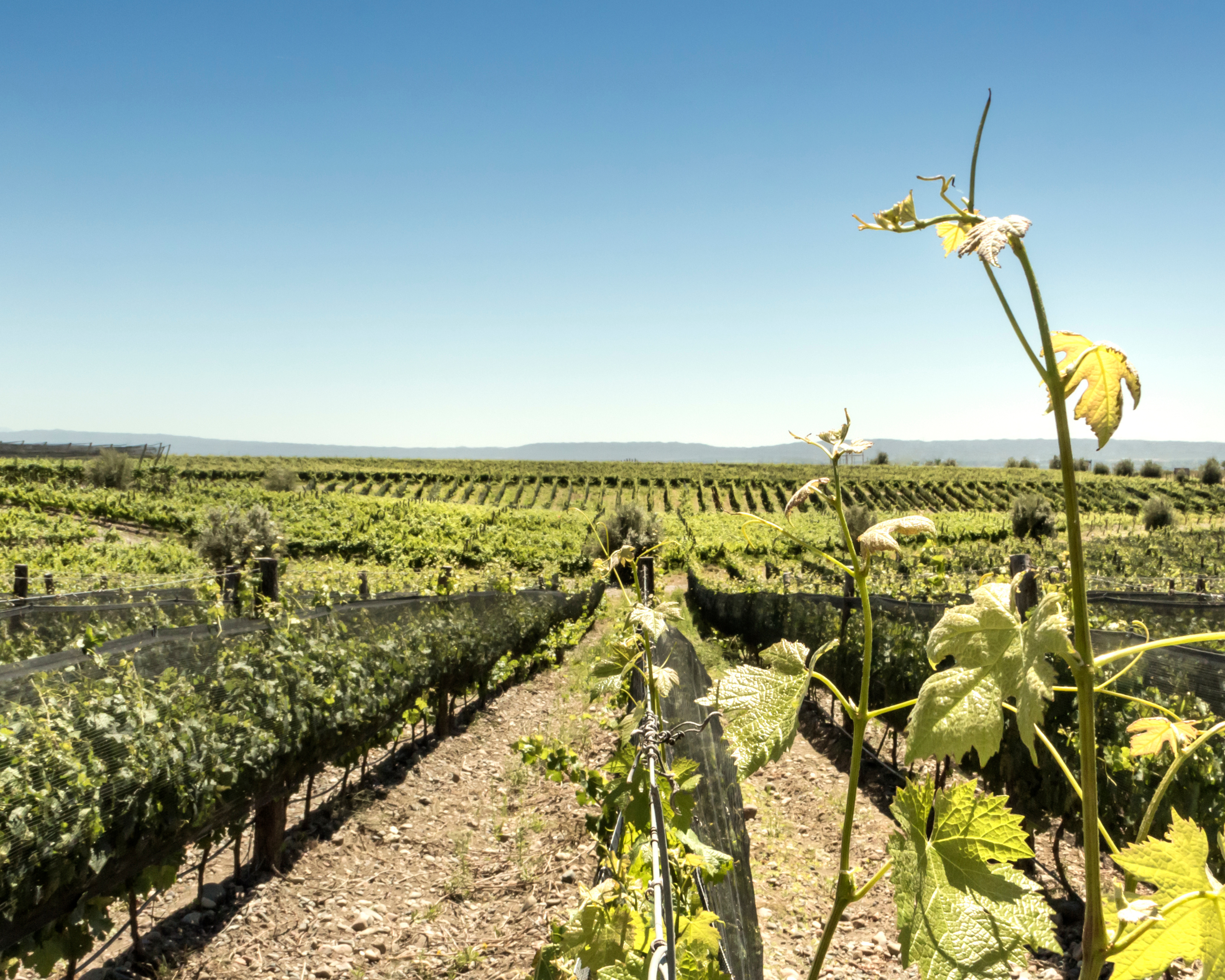
Argentine Wine Regions
Explore Argentina’s wine regions – bold, fruit-forward wines from high-altitude vineyards, with Malbec as the country’s flagship variety.
Good wine is a good familiar creature if it be well used.
-William Shakespeare
Argentina: A Rising Star in the New World Wine Scene
Argentina has risen to prominence as one of the leading wine producers in the New World, known for its bold, expressive wines, high-altitude vineyards, and unique terroirs. From the soaring Andes Mountains to the vast, sun-drenched valleys, Argentina's diverse climates and landscapes contribute to its growing reputation on the global wine stage. The country's winemaking history stretches back over 400 years, but it's the modern era that has seen a true boom in Argentina's wine industry, particularly in regions like Mendoza, Patagonia, and Salta.
The country's signature grape variety, Malbec, has become synonymous with Argentina, known for its deep color, intense fruit-forward flavors, and velvety texture. However, Argentina is not just about Malbec – there’s a wealth of other varietals, such as Bonarda, Cabernet Sauvignon, Torrontés, and Syrah, each expressing the unique terroir of the region in which they're grown. Argentina’s commitment to quality and innovation has earned it a spot among the world's most respected wine regions, appealing to both wine enthusiasts and collectors alike.
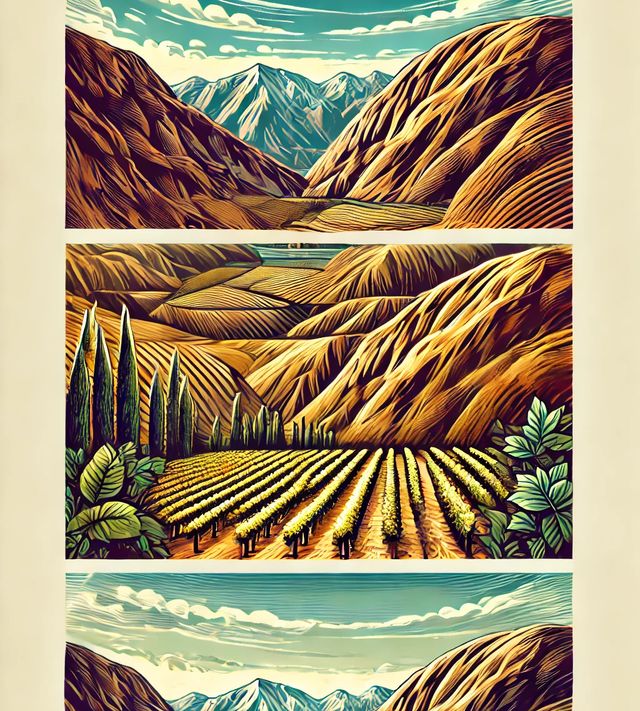
Bold flavors and Malbec mastery.
Mendoza: The Heart of Argentine Wine
Mendoza, producing 70% of Argentina's wine, is the country’s most important wine region. Known for its high-altitude vineyards and iconic Malbec, Mendoza offers a diverse range of wines, from bold reds to fresh whites.
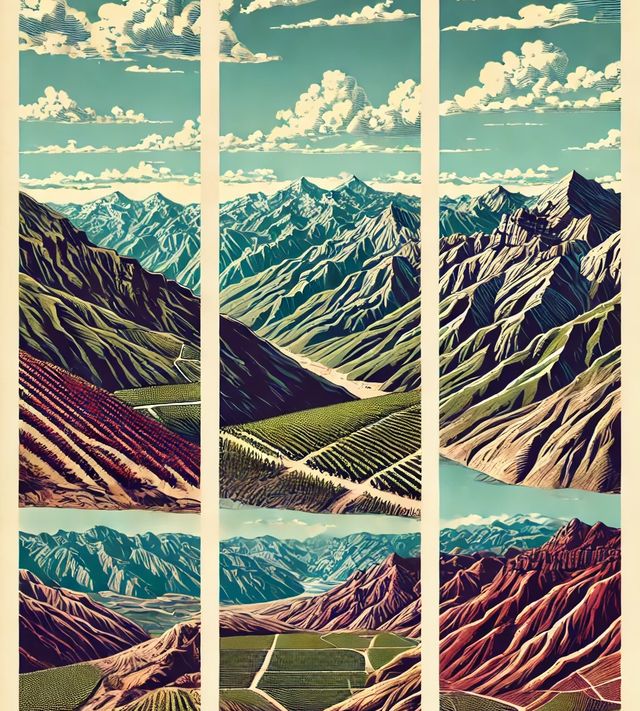
Unmatched altitude, unique character.
Salta: Extreme Altitude Wines
Salta is renowned for its high-altitude vineyards reaching up to 3,000 meters. This extreme environment produces distinctive wines, particularly aromatic Torrontés and bold Malbec.

Elegance in every glass.
Patagonia: The Cool-Climate Jewel
Patagonia’s cool climate is ideal for producing refined and elegant wines. Known for its fresh Pinot Noir and Sauvignon Blanc, Patagonia is quickly becoming a top destination for wine lovers seeking finesse and balance.
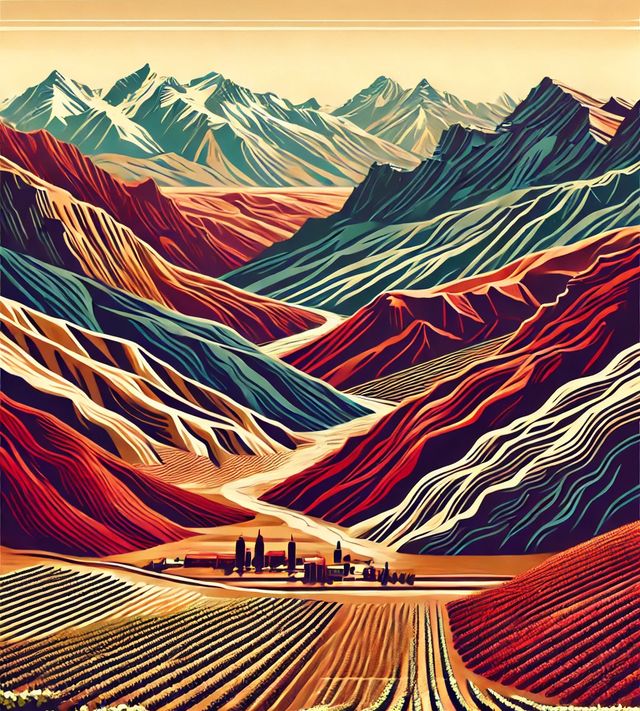
Powerful reds, rich history.
San Juan: Bold Reds and Fortified Wines
San Juan is the second-largest wine-producing region in Argentina, specializing in Syrah, Malbec, and fortified wines. Its high-altitude vineyards produce intense, full-bodied reds.
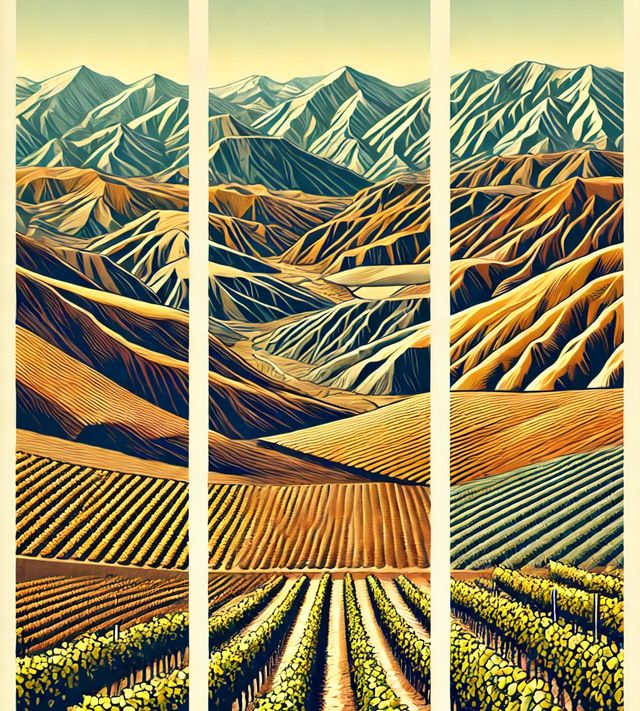
Where heritage meets innovation.
La Rioja: Argentina’s Wine Heritage
La Rioja is one of Argentina’s oldest wine regions, known for its heritage and aromatic whites, particularly Torrontés. The region’s history and tradition are reflected in every bottle.

High-altitude brilliance in every sip.
Catamarca: High-Altitude Wines
Catamarca’s extreme altitude produces bright, fruit-forward wines, especially Malbec and Torrontés. The rugged landscape and unique terroir give the wines exceptional depth and character.
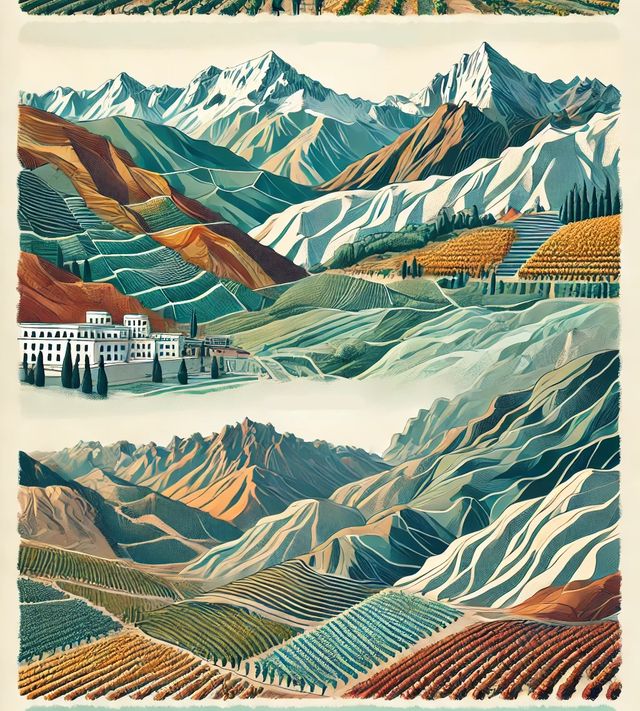
New regions, new possibilities.
Emerging Regions: The Next Frontier
Argentina’s emerging wine regions, such as Jujuy and Córdoba, are pushing the boundaries of winemaking with extreme altitude and innovative techniques, producing wines that are garnering global attention.
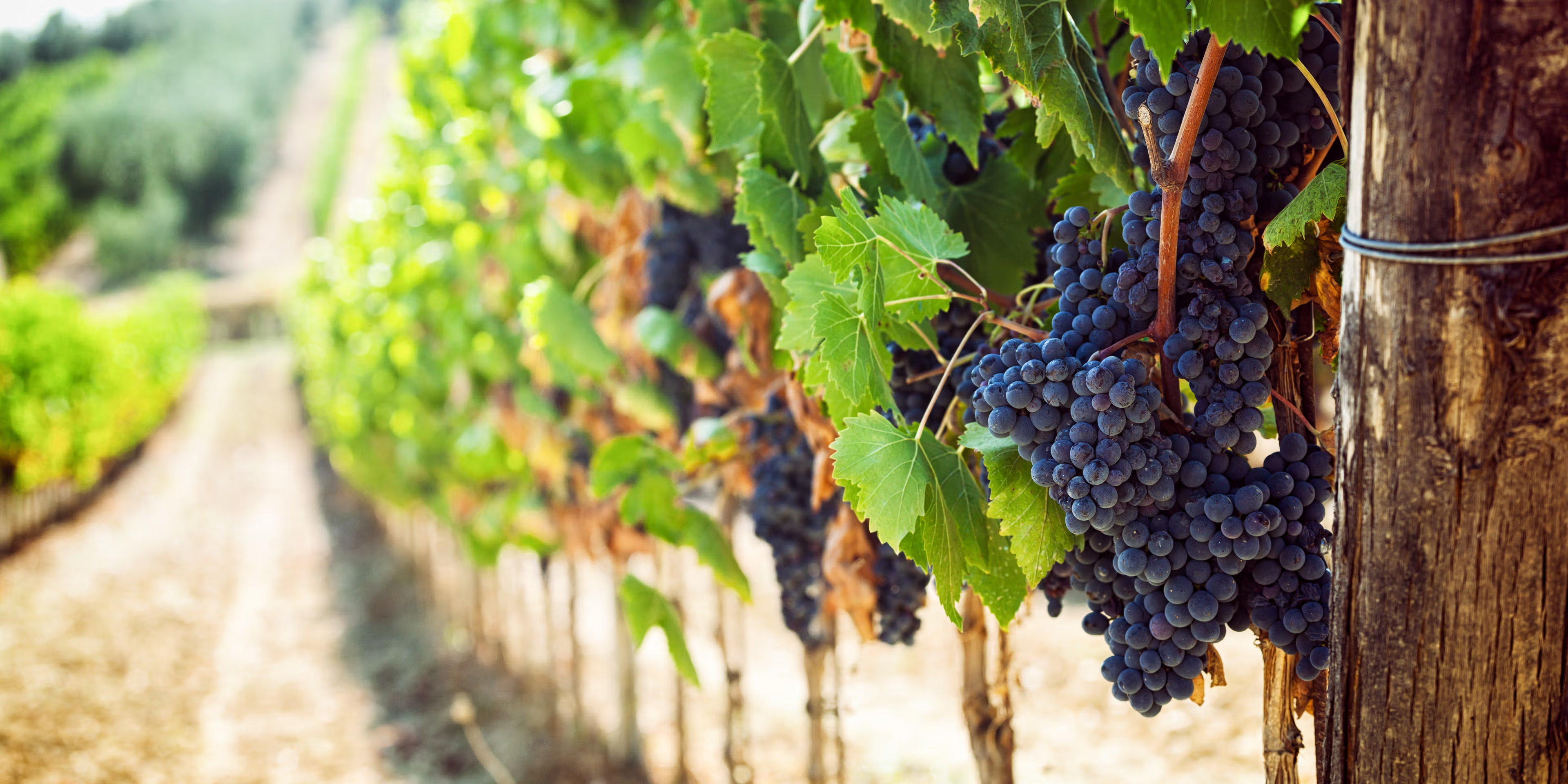
Signature Grapes of Argentina
Malbec and Beyond: Argentina’s Diverse Grape Varieties
While Malbec is undoubtedly the flagship grape of Argentina, the country’s wine scene offers a wide range of varietals, each with a distinct character influenced by the country’s diverse climates and terroirs.
Malbec: Known for its deep color, dark fruit flavors, and velvety tannins, Malbec is the undisputed hero of Argentina’s wine landscape. It thrives in regions like Mendoza, where the high-altitude vineyards contribute to its intense and complex profile, with flavors of ripe plum, blackberry, and spice. Malbec has become a symbol of Argentine winemaking, renowned for its ability to express the unique character of the region’s terroir.
Bonarda: Emerging as a star in Argentina, Bonarda is a red variety producing wines with vibrant fruit notes, soft tannins, and refreshing acidity. It is increasingly being recognized as a complement to Malbec, offering a slightly lighter, fruitier option.
Cabernet Sauvignon: This classic red variety is grown across Argentina, producing wines with firm structure and dark fruit flavors. While it shines in the cooler climates of Patagonia, it is also found in regions like Mendoza, where it thrives in the sun-drenched vineyards.
Torrontés: Argentina’s signature white grape, Torrontés is known for its aromatic intensity, floral notes, and bright acidity. Grown primarily in Salta and Mendoza, Torrontés produces wines that are fresh, crisp, and slightly spicy, making them an excellent pairing for a variety of dishes.
Syrah: Thriving in both warm and cool-climate regions, Syrah in Argentina is known for its bold, peppery flavors, with deep color and concentrated fruit. The wine’s rich, structured nature makes it ideal for aging, particularly in regions like San Juan and Patagonia.

Understanding Argentina’s Wine Classification System
Denominación de Origen Controlada (DOC) and More
Argentina has a well-defined wine classification system, aimed at ensuring the quality and authenticity of its wines. The system helps distinguish wines based on their geographical origin, grape variety, and production methods. There are three primary classifications:
Denominación de Origen Controlada (DOC): This system ensures that wines come from specific regions that are recognized for their quality. Wines labeled with DOC are subject to strict regulations, including limits on grape yields, winemaking methods, and aging processes. This ensures that the wine maintains the highest standards of production.
Indicación Geográfica (IG): The IG classification indicates wines from specific geographic areas. These wines are recognized for expressing the unique characteristics of their terroir, whether it's the high-altitude vineyards of Mendoza or the cool-climate Patagonia.
Indicación de Procedencia (IP): This classification refers to wines that originate from recognized production areas, ensuring that the wine reflects the natural conditions of the region, whether it’s La Rioja’s heritage or the rising potential of regions like Córdoba.
Together, these classifications help maintain the integrity of Argentine wine and guide consumers in selecting high-quality, authentic products from different regions of the country.
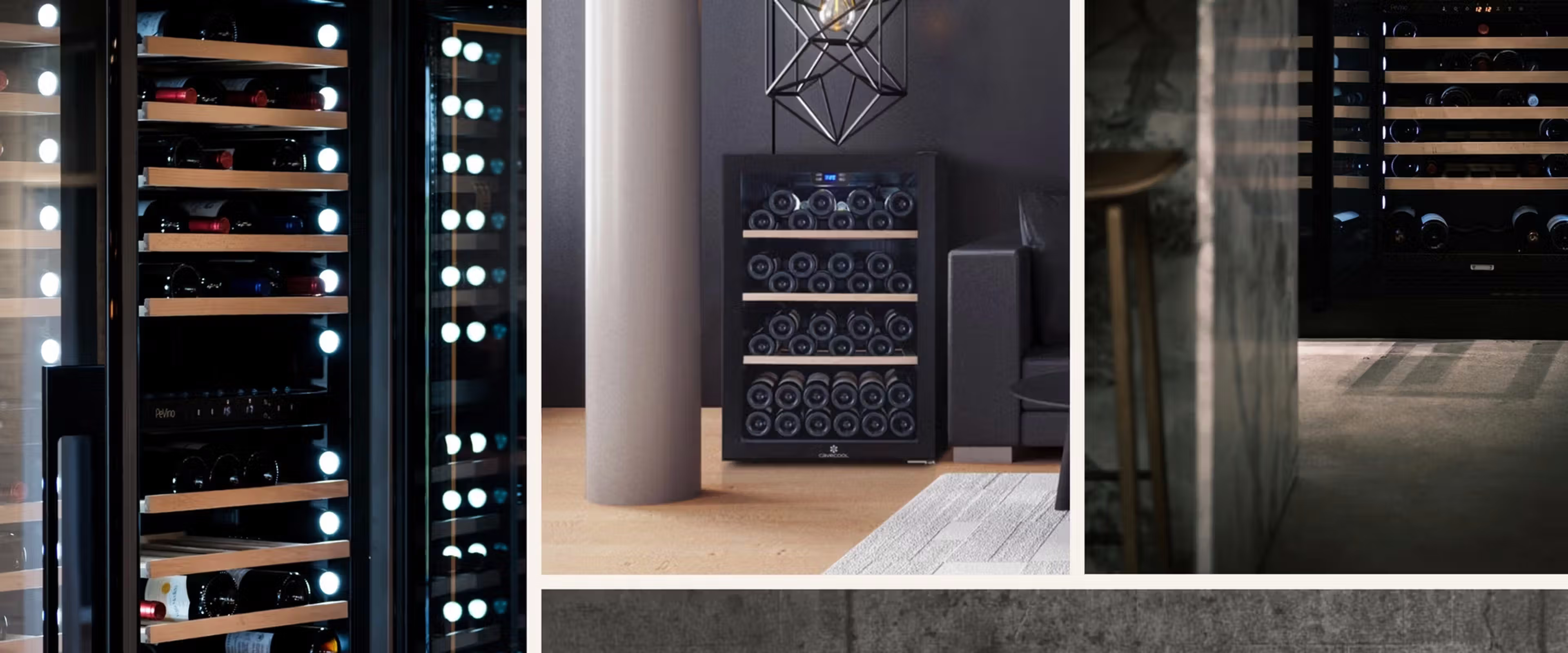
Everything you need to know about wine fridges
How Noisy Is a Wine Cooler?
Wine refrigerators are not silent – but how much noise is acceptable? This blog explores the sound levels of wine coolers and provides expert advice on how to reduce any unwanted noise in your home. Understanding the causes of noise and how acoustics work can help you enjoy your wine storage in peace.

Discover the world of wine knowledge
How to Learn About Wine
Learning about wine is a never-ending journey. Whether you’re looking for the best guides, following wine gurus, or sifting through countless resources, the wine world offers endless possibilities for expanding your knowledge. This blog shares some essential tips for starting your wine education and highlights useful sources of information to help deepen your appreciation for wine.
Argentine Wine Regions: Bold Flavors and Unique Terroirs
Argentina has established itself as one of the top New World wine producers, known for its unique terroirs, high-altitude vineyards, and bold, fruit-forward wines. The country's diverse geography allows for a wide range of wines, from the famous Malbec to fresh, aromatic whites like Torrontés. The Argentine wine industry has experienced significant growth over the past few decades, with regions like Mendoza, Patagonia, and Salta earning international acclaim. Argentina's commitment to quality and innovation has made it a standout on the global wine stage.
The Key Characteristics of Argentine Wine
One of the defining features of Argentine wine is the country’s high-altitude vineyards, which contribute to the wines’ fresh acidity and intense flavor profiles. The high elevation allows for a significant difference in day and night temperatures, which helps preserve the grapes' acidity and freshness while enhancing their flavor complexity. This is especially true for Malbec, Argentina’s flagship red wine, which thrives in regions like Mendoza and Patagonia.
Argentina’s wine regions also benefit from diverse climates. The cool, temperate climate of Patagonia produces elegant wines like Pinot Noir and Chardonnay, while the warmer regions like San Juan and Mendoza focus on bolder, full-bodied reds.
Argentina’s Wine Classification System
The country’s wine classification system helps ensure that consumers can trust the authenticity and quality of Argentine wines. Argentina uses three main classification systems:
- Denominación de Origen Controlada (DOC): Wines produced under this classification are held to strict regulations to maintain their high quality, ensuring that the wine reflects the unique characteristics of its origin.
- Indicación Geográfica (IG): This system recognizes wines from specific geographic regions, helping to distinguish the unique qualities that different terroirs contribute to the wine.
- Indicación de Procedencia (IP): Wines with this label indicate their provenance from recognized production areas, ensuring that the wine represents the region’s specific characteristics.
These classification systems play an essential role in maintaining Argentina's reputation for producing high-quality, authentic wines.
Key Grape Varieties in Argentina
Argentina is known for its bold, expressive wines, and much of the country’s success can be attributed to its signature grape varieties. Malbec is the star of Argentina’s wine industry, with the country's Malbec wines gaining global recognition for their deep color, rich fruit flavors, and velvety texture. Other key red varieties include Cabernet Sauvignon, Syrah, and Bonarda, each contributing their unique characteristics to Argentina’s diverse wine landscape.
For white wines, Argentina is known for its Torrontés, an aromatic white variety that is especially popular in Salta. Chardonnay and Sauvignon Blanc are also important in regions like Patagonia and Mendoza, producing wines that range from fresh and zesty to rich and oaked.
Explore Argentine Wine with the Right Accessories
To fully appreciate the rich, complex flavors of Argentine wines, you need the right wine glasses and accessories. At Wineandbarrels, we offer an exclusive range of Laguiole corkscrews and accessories, perfect for completing your wine collection. Nothing complements an exclusive wine selection like a Laguiole corkscrew, known for its craftsmanship and elegance. Explore our full collection to find exceptional corkscrews, pocket knives, and more.
For those who are serious about wine, Riedel wine glasses are an excellent choice, offering glasses specifically designed to enhance the aromas and flavors of different wine varieties. Whether you're enjoying a Malbec or a crisp Torrontés, Riedel glasses are crafted to elevate your tasting experience.
Looking for even more options? Zwiesel Glas offers professional-grade crystal glasses that cater to the tastes of both novice and experienced wine enthusiasts. Their elegant designs are perfect for those who appreciate fine wine and fine glassware. Choose from a variety of glass styles to find the perfect match for your personal taste.
Explore our selection of wine glasses, corkscrews, and storage solutions to enhance your Argentine wine experience today.